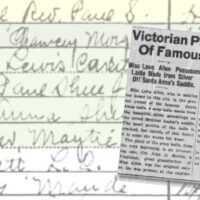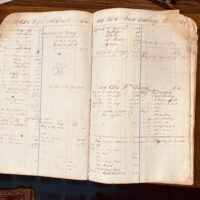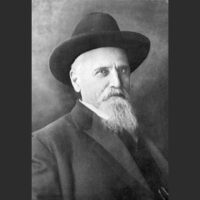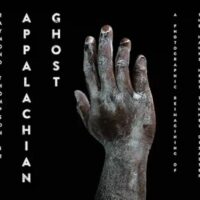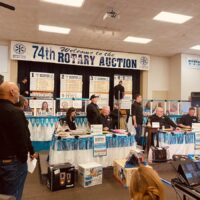This is the first installment in a four-part Hoptown Chronicle series for Black History Month.
A few years ago, a research nugget in Jack Glazier’s book on race relations in Christian County — “Been Coming Through Some Hard Times” — introduced me to a series written by Charles Meacham and published in the Kentucky New Era. Meacham, a former Hopkinsville mayor and newspaper publisher, titled the series “Slavery Survivors,” and he sought to tell the stories of people living in Christian County who had been enslaved. It had been 70 years since the end of the Civil War. Meacham found and told the stories of 25 people.
- SUBSCRIBE: Sign up for our newsletters
I spent days reading and transcribing these stories. I warn you that the language used in these short vignettes is paternalistic at best and downright racist at its worst. Most of the men and women are given the monikers “aunt” and “uncle,” and their life experiences are mainly told as they relate to the white people who had enslaved them. Phrases like “credit to his race” and “looks back upon the old days with pleasure” pepper the short biographies. Some were written in third person by Meacham, some are presented in a first-person dialect, and others were written by the individuals themselves. Each one tells a story of a person who lived a life that I cannot even begin to imagine.
In spite of the biased and often offensive language to my sensibilities, I celebrate these little stories. As someone who works every day to learn and share a little bit more of our local history, I think we can use them as a launching point to discover more about these individuals in particular, but also about the lives, circumstances and values of the community they represent.
This is my first attempt at doing just that. Below are brief biographies of the 25 people we meet through the 1934 “Slavery Survivors” series. I did a bit of research to add details to the information shared in the original pieces. I recognize that there is still so much more to know.
Ann Killebrew
Born in 1845 in Virginia, Ann Killebrew was enslaved in southern Christian County on the large farm operation of Henry Young. Her biography states simply that “her father was a white man” and that she was a “house girl” as opposed to a field hand. She married Charlie Killebrew, a veteran of the Civil War, in 1867. They raised 12 children, and census records indicate that she gave birth to 17 total. Although illiterate, all of her children were able to read and write. By 1910 she was widowed and living with two of her children in bank president Edward Long’s home, where she worked as a laundress and domestic servant. By 1920, she lived on her own and, in 1930, was staying in the home of her daughter Sylvia Young and her family on Younglove Street. Ann died of heart issues in 1935 and is buried at New Asia Baptist Church in the southern part of the county.
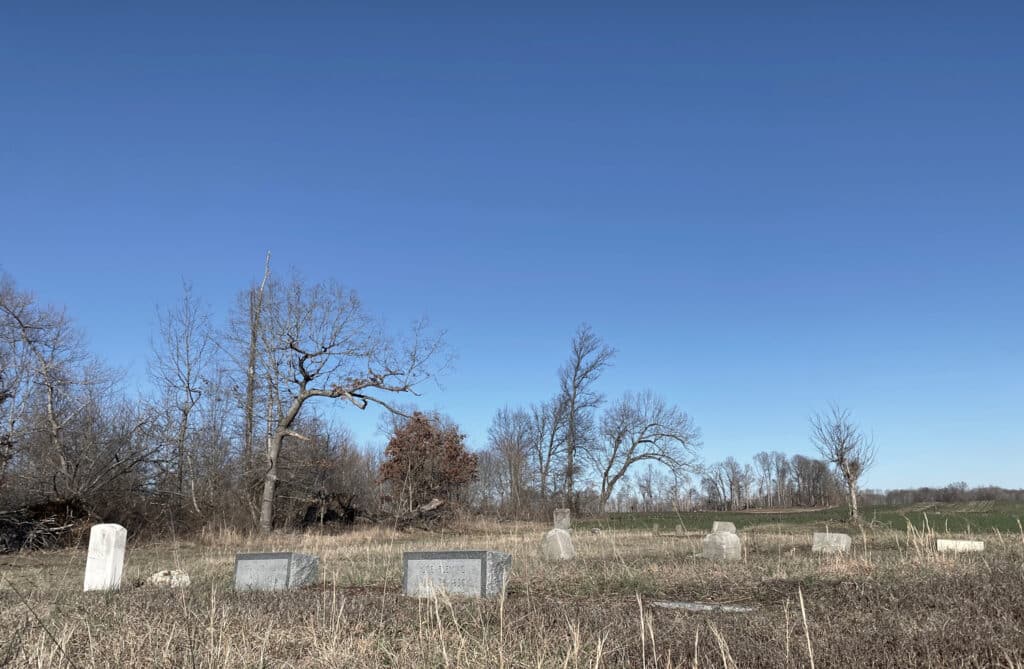
Charlie Springfield
Charlie Springfield took the last name Springfield because that is where his mother was born. Born in 1853, he grew up enslaved by the Leavell family, and he stayed in the area of their farms after he was emancipated. He married Mariah Johnson, worked as a sharecropper, and was widowed by 1900. At the time of his interview, he lived near Herndon with his daughter Julia Campbell. I was unable to find the date of his death.
Sarah Howard
Born in 1848 on the farm of John Wilson in Trigg County, Sarah Howard moved to Christian County after the war. Like many of the short biographies, Sarah’s recounts memories of the cannons firing and excitement during the Civil War battle at Fort Donelson. In 1870, she lived in Trigg County with her husband Harrison Wilford with whom she had at least three children. She must have remarried, but the online paper trail did not turn up solid answers. In 1934, she lived with her daughter Molly Henry on Canton Pike.
George Crabbe
This story was written in first person and is one of the most painfully powerful ones in the set. I’ll share it directly:
“My name is George Crabbe and I am eighty-four years old. My mother was owned by Jarred Crabbe and when I was a little child she was sold to Mr. George Cayce and I never saw her no more until I was thirty-five years old. She was living in Brooklyn, N.Y. and advertised for me. I was her only child and my father was a white man and after I found her she told me who he was. I lived in Christian and Todd counties after the war and now live in a little home of my own at Herndon.”
Can you add to these stories?
Let us know by emailing editor@hoptownchronicle.org.
Sophie Shade
Born in Lexington in 1834, Sophie Shade was set to celebrate her 100th birthday the day after her story ran. She was given as a gift to her owner’s daughter and moved to Christian County when that woman married. Finding herself without a home after the Civil War, she married John Shade, a veteran who served in the U.S. Colored Troops. This appears to have been both of their second marriages, but I was unable to find the name of Sophie’s first husband. In 1920, the couple lived in Danville, Illinois, where John was in a home for disabled veterans. He died and was buried there. Sophie moved back to Hopkinsville and was living on East Third Street in 1935. That was the last bit I found about her.
Wash Smith
Born in 1854, Wash Smith farmed in South Christian before moving to town, where he worked for Dalton Brothers Brick Company for 28 years. He married in 1874. His wife, Mary, worked as a cook and died before 1910. The 1930 census lists him at 127 N. Campbell St., living in a home that he owned. His vignette includes a quotation from T.M. Dalton, his former employer: “Yes, Wash worked for me until he got too old to work. He was a good hand and the kind that sang while he worked. He could sing louder than anybody I ever heard.”
Jennie White
Born about 1860 in Todd County, Jennie White shared that she had worked as a cook and maid for a number of local white families during her lifetime. She married Ed White and had two daughters. At the time of the interview, she lived with one of them, Lilly Bell Major, on Second Street. She was a member of the Baptist church. Additional details I found in census records did not match her story exactly. I was able to find her living with her sister Luella Woodson in the 1940 census. I am unsure as to when she died.
Jack Davie
Likely born in Montgomery County in 1852, Jack Davie lived and worked in the Herndon area most of his life. He was married three times and did not have any children that lived to adulthood. In his interview, Jack made a point to mention that he had never had any trouble getting along with white folks. He died in 1939 and was buried in the county.
Kitty Ann Bell
Born in 1848 in Nelson County, Kitty Ann Bell was brought to Todd County at the age of 6 by her owner Ed W. Weathers. She served as a nurse to the Weathers children and had “no experience in the rougher work of washing and cooking.” She married Jesse Bell in 1869, had eight children, and lived near Fairview. Kitty was a midwife for more than 40 years and owned her home on East Second Street by 1930. She was 84 years old when she died in 1939. Her death certificate lists her occupation as a nurse.
Henry Scott
Henry Scott was young when he was emancipated but remembered his mother telling him “Now you is just as free as anybody.” He lived in the county and worked on farms most of his life. When he moved to town, he (like Wash Smith) worked for Dalton Brothers Brick Company. He and his wife, Harriett, lived on Barrow Street off West 7th. Henry died on Oct. 22, 1934 — just a few months after his story ran in the newspaper. Harriett was still alive in 1940.
Amanda Pepper
Amanda Pepper, also listed as Mandy and Manda, was enslaved in Todd County by the Stuart family. Born in the early 1840s, she was about 20 years old when she was emancipated. She worked as a domestic servant and nurse before marrying Armstead Pepper in 1873. Widowed (or single, at least) with three children by 1880, Amanda appears on the 1900 census as a farmer in the vicinity of Greenville Road. She endured a great deal of family tragedy. Her son Columbus murdered her other son in 1905, and Columbus was murdered in 1917 in Evansville, Indiana. Amanda moved to Louisville to live with her daughter Bertha after the Meacham interview in 1934. She died there in 1937 but was brought back here to be buried in the Gainsville Cemetery.
Aleck Brent
Aleck, or Alex, wrote his own biography for the “Slavery Survivor” series. He was born in Hopkinsville in 1858 and, in his own words, “was anxious for an education and worked and went to school all I could.” He worked various jobs before becoming the first African American in the county to fill a government position in 1884 when he was hired to work for the revenue collector. He owned and operated a grocery store on Seventh Street, he was an original shareholder in the Hotel Latham, and he served as a trustee for the colored schools and for Virginia Street Baptist Church. He married twice and had one son who lived in Florida as of 1934. Brent died in 1941.
Jennie Carter
Like Sarah Howard, Jennie Carter was enslaved on the farm of John Wilson in Trigg County when she was born in 1854. She married Jesse Carter, learned to read and write, raised a family, and worked as a domestic for many years. At the time of her interview, she lived with her oldest son Felix near Gracey. She died in 1937 and was buried at West Union.
John Vaughan
Enslaved in Fairview, Kentucky, by the Vaughan family. John Vaughan’s vignette notes that he was born in the “immediate vicinity of the towering obelisk that now marks the spot where Jefferson Davis was born.” He and his wife Ellen had at least five children, and I found them at varying times in Christian, Trigg and Todd counties. John worked primarily as a farm laborer. His wife died in 1927, and he lived with his oldest daughter, Ethel Irvin, and her family on Hayes Street for the remainder of his life. I’m not sure when he died, but it was after 1940. He is listed in the census as living with his daughter Ethel and granddaughter Marcelline, a teacher.
Sue Smoot Blair
The daughter of Silas and Maria Hopson, Sue Smoot Blair was born in 1848 and sold to Mrs. John Smoot when she was just 3 years old. She married Thomas Blair shortly after she was emancipated at age 15, and her interview indicated that she had no children of her own but raised about 10 until they were self-supporting. She worked as a house nurse for white children most of her life. By 1930, she owned a home at Providence in Montgomery County, Tennessee, where a teenage girl boarded with her. She died in 1942 and is buried in Woodlawn Cemetery.
William Henry Kirby
William Henry Kirby’s story is more interesting in his own words:
“I was born in slavery times, but my [m]other’s freedom had been bought and I was not like the other slaves. My grandmother was an Indian and my grandfather a white man. My mother, Nancy Baker, looked like an Indian and my father was a colored man. I was sixteen years old when the war broke out and went with the Confederate Army for the first year. We didn’t see much of any Union soldiers until after Ft. Donelson fell. I was with General H. B. Lyon’s forces as a body servant.”
He lived in Trigg and then moved to Christian County where he worked as a gardener and laborer for most of his life. He married twice, but he shared that he had no children or grandchildren when interviewed in 1934.
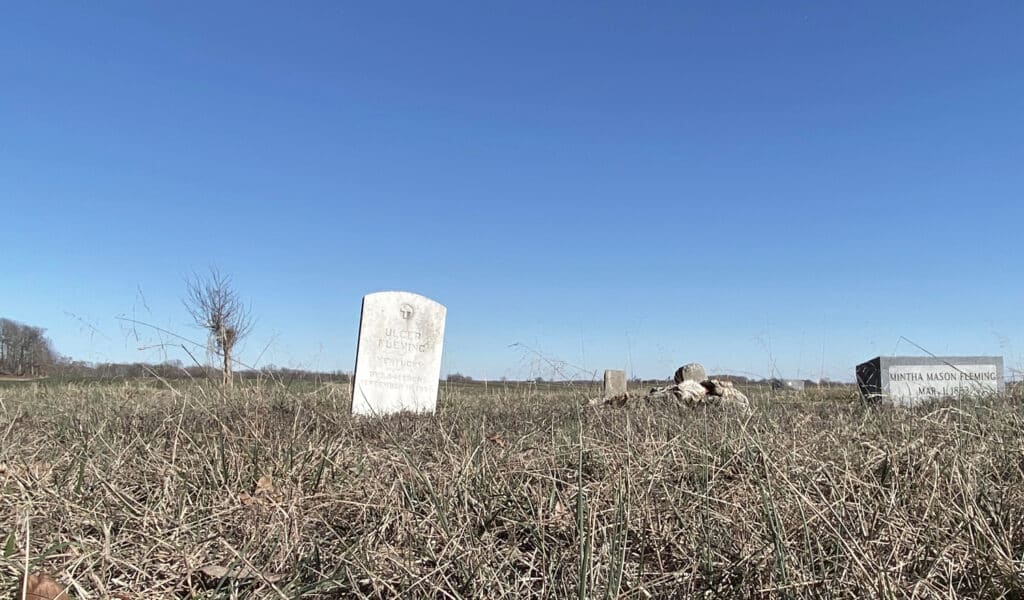
Kitty Kelly
Enslaved in McLean County, Kentucky, Kitty Kelly moved here after the Civil War. In 1871, she married Beverley Kelly, who would be the first African American elected to a public office when he was voted in as coroner in 1881. When interviewed, she lived in a home on East Second Street that she owned with her older sister, Hannah Means. Born in 1842, Hannah married Albert Means in 1874, her second marriage. I was unable to find when either sister passed away.
Park Mimms
Born in 1849 in Todd County, Park Mimms took the name of his father when he was freed. He married Mary Ann Day, also of Todd County, and the two raised a family of four children (even though census records indicate that Mary gave birth to many, many more). By 1900, the family lived in the Bainbridge district of Christian County and were members of Mt. Zion Baptist Church. Park worked as a farmer and laborer in tobacco warehouses until he, in his words, got too old. His wife died in 1924. In 1930, Park and two of his children were all widowed and living together on Long Alley. My favorite detail from his interview: “My old master had a son named Lige who lived in Hopkinsville. He was a Republican and I helped send him to the Legislature.” Park made sure to vote.
Nelson Radford
Interviewed while in town paying his taxes, Nelson Radford was born in South Christian on the farm owned by Charles J. Radford in 1850. He lived within seven miles of his birthplace his whole life. He married Bettie, and they raised a family as he farmed and she worked as a washerwoman. Nelson died when he was 83 years old. His death certificate attributed his death to asthma. He was buried at Bell’s Chapel. In the 1940 Census, Bettie was listed as a midwife at age 88.
Monroe Campbell
Described as a mulatto born in 1850, Monroe Campbell was the property of William Campbell of Christian County. The 1934 interview stated, “Monroe still carries a small book in which the names of the four children of his mother, whose name was Sookie, were listed. They were Matthew, born in 1848, Monroe 1850, Matilda 1855, and Frank 1857.” After the Civil War, he lived and worked in Clarksville before returning to Hopkinsville. He married Millie Brock in 1878, and they had at least two children. By 1900, he, a widower, and his son Walter lived in Hopkinsville with his deceased wife’s sister. He remarried in 1904, worked as a porter at Cayce Mill in the 1920s, and as a janitor for the public library for 17 years. He lived with his niece Mollie Henry in 1934. Although I didn’t find a death date for him, he was not listed in the 1935 city directory.
Kate Billingsby
Born about 1844, Kate Billingsby was enslaved by the Buckner family in southern Christian County. Her interview provided very few details. I found her in the 1910 census listed as Kate Billingsly. She lived on Wood Mill Road, was a 63-year old widow, had no living children, and worked as a washerwoman. Her nephew Ed Moseley and two women boarded with her. The 1920 Census told the same basic story. She appears in the 1935 Hopkinsville City Directory on Wood Mill Road, as well. That was the last I found of her.
John Gholston
John Gholston’s story in the New Era revealed that he was born in 1850 to a woman enslaved on the farm of William Outlaw in Stewart County, Tennessee, near Dover. He moved to southern Christian County in 1868 and worked as a farm hand. The rest of his story is a mystery to me. I couldn’t find him listed anywhere. I found other Gholstons, and I found that the spelling of their last name varied greatly in documents.
Willis Killebrew
According to his death certificate, Willis Killebrew was born in 1864, but the recollections he shared about the Civil War are clues that he was born earlier. A slave of the Killebrew family in South Christian, Willis lived and worked in Clarksville for a number of years before returning here. By 1910 he and his wife, Nannie, had two sons and were boarding with another family on East Fourth Street. He died on Oct. 22, 1934, the same day as Henry Scott discussed here previously. His death certificate listed his name as the Rev. Willis Killebrew and his occupation as a butler. He is buried at Cave Springs Cemetery.
Andrew Moore
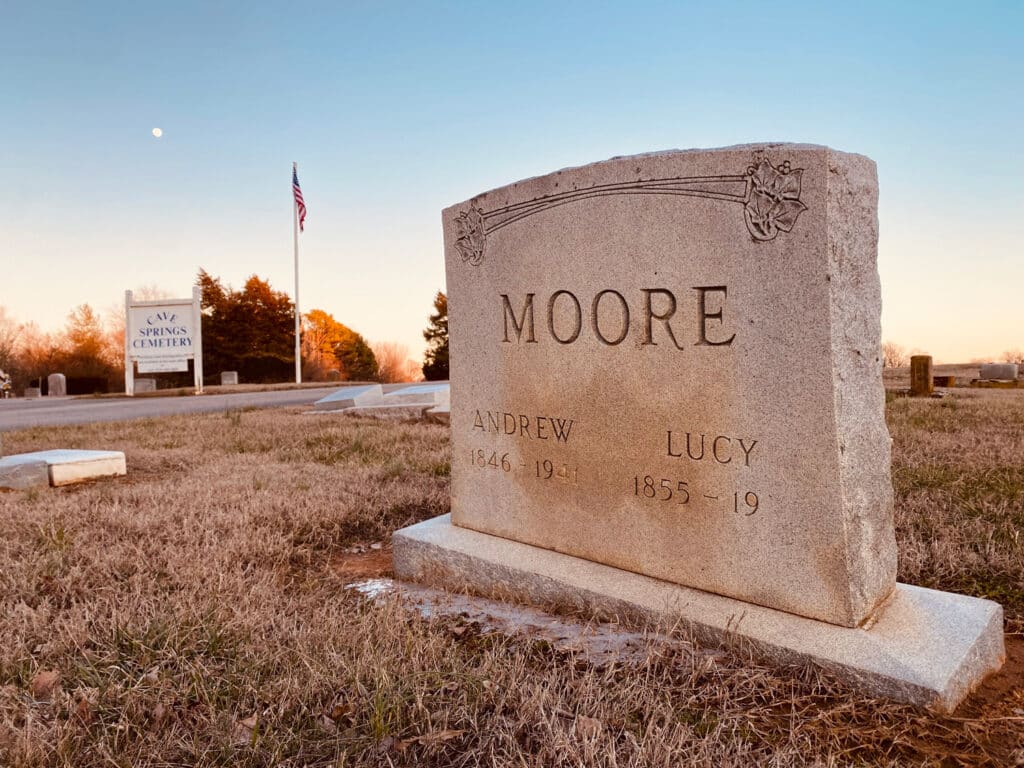
Andrew Moore was born in 1847 near Oak Grove “into the possession of Jap Fletcher.” Sold to Billy Riggins at age 16, he was then mortgaged to Captain C.D. Bell. He joined the Union Army in Nashville and served as a cook in Co. D, 102nd Regiment of the Ohio Infantry for two years and four months. He returned to Christian County and married his wife Lucy around 1874. A sharecropper in South Christian in 1900, he made his way to the northern part of the county where he owned a farm on Greenville Road by 1920. He died in 1941 at the age of 96. He is buried in Cave Springs Cemetery.
Alex Morehead
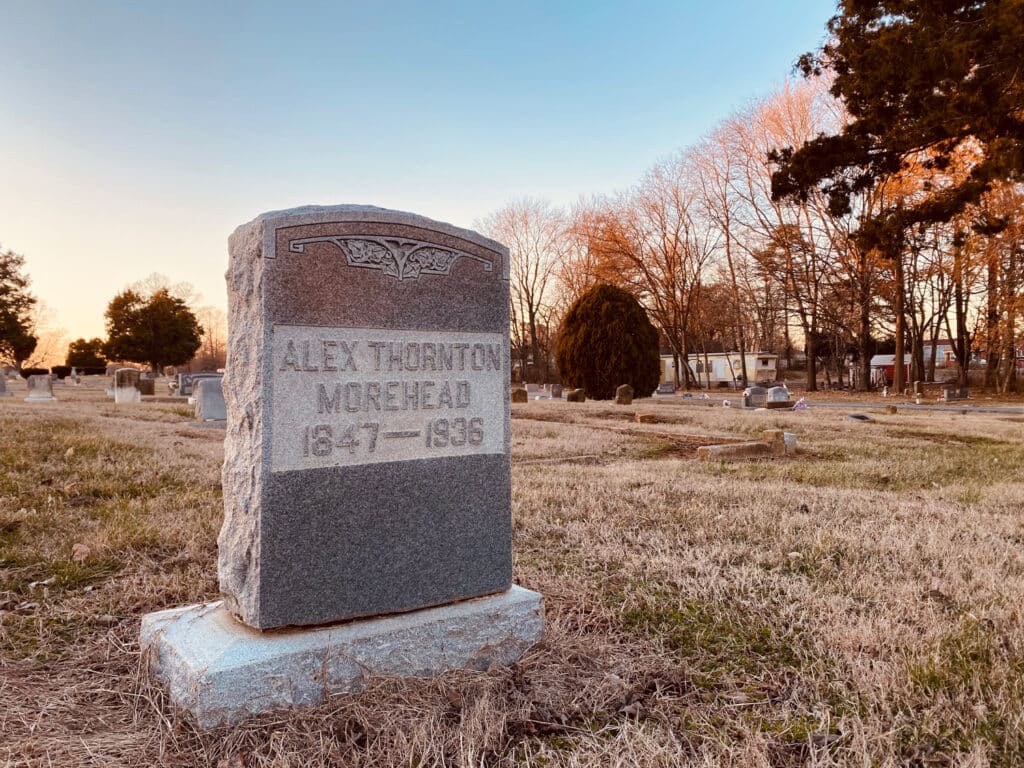
Born in Simpson County in 1848, Alex Morehead was moved by the family who enslaved him a number of times before he joined the U.S. Colored Troops in 1865. He provided a detailed account of the many places he worked — including on the construction of the railroad line from Nashville to Henderson — after he was discharged from the army. He married twice, raised five children, and two sets of grandchildren. He shared that he “(n)ever went to school a day in my life, but I can read, and write my name.” By 1920, he, his wife and a granddaughter were living on East Second Street where he stayed until he died. He passed away in 1936 of stomach cancer and is buried in Cave Springs Cemetery.
